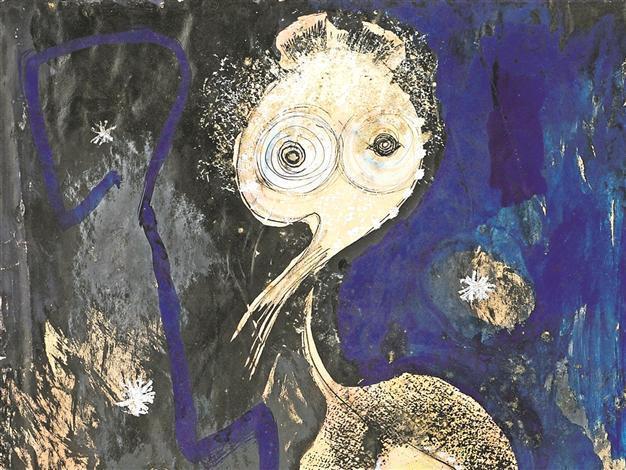CoBrA returns to Sakıp Sabancı Museum
ISTANBUL - Hürriyet Daily News

The selection on view at the Sabancı Museum includes graphic drawings and pencil or gouache on paper works from the Dutch museum’s collection.
The Sakıp Sabancı Museum announced today the opening of a new
exhibition to run through the summer in cooperation with the CoBrA Museum of Modern Arts in the Netherlands.
A selection from the Dutch museum’s archive featuring works by CoBrA artists will be exhibited at the Sabancı Musem throughout the summer. The exhibition, titled “The CoBrA: 1,000 Days of Free Art,” opens to visitors today.
CoBrA, which was established in Paris in 1948, was an international movement of artists from various European countries, which lasted only until 1952, hence the “1,000 days” of the exhibition’s title. The name of the group was an acronym of the three capital cities where the founding members lived and worked: Copenhagen (Denmark), Brussels (Belgium) and Amsterdam (the Netherlands). The movement’s members were young avant-garde artists with an ambition to initiate a new and free form of art. They wanted to embrace people with art, rather than excluding them. The artists of CoBrA believed in a new folk art for and by everyone.
CoBrA’s members, who originated in several different European countries, were united in their struggle towards direct and spontaneous expression. They were inspired by a “multi-faceted primitivism” exemplified by the creative outpourings of children and mentally ill people, primitive art forms, folk art, non-Western and tribal art and primitive forms of Scandinavian art from the Middle Ages and prehistoric times.
Although CoBrA’s official existence was a relatively short one, lasting from November 1948 until November 1951, it saw the birth of a free and spontaneous form of art that changed the world forever. The international members of the group created a synergy that resulted in a profoundly childlike and spontaneous style.
Painting was not the only art discipline in CoBrA. The brush and the pen were closely aligned. The painters, such as Karel Appel and Corneille, wrote poetry, and the poets, among them Lucebert, also made visual art. The artists also created joint works together, such as murals and the decoration of houses in Denmark. Furthermore the different artists were interested in all sorts of disciplines that allowed them to experiment with materials, such as ceramics. Together the members of the group released 10 issues of a magazine containing illustrations, reproductions of art works, poems, manifestos and short essays on art and culture.
The selection on view at the Sabancı Museum includes works by Appel, Constant, Eugene Brands, Corneille and Asger Jorn, as well as graphic drawings, and pencil or gouache on paper works from the museum’s collection. The exhibition is spread over two floors and three exhibition areas. The top storey features a timeline about the development of the CoBrA movement, as well as Appel’s quintessential 1951 work “Femmes, Enfants, Animaux” (Women, Children, Animals). The lower storey is divided into two halls, one showcasing the Experimental Group in Holland, and the other showing sculptures by Shinkichi Tajiri, as well as a documentary on Appel.
CoBrA art blends well with TurkeyTurkey fascinated a number of CoBrA artists. For example, the Danish sculptor and painter Henry Heerup visited Turkey to commemorate the 200th anniversary of the Danish Royal Academy in 1954. Ancient Eastern traditions and mysticism also held great appeal for Pierre Alechinsky, Tajiri, and others. During the mid-fifties, the Belgian-born Alechinsky (1927) developed a form of calligraphy that became associated with the CoBrA movement. The ancient tradition of calligraphy, The influence of CoBrA’s Northern Expressionism, in combination with his personal adaptation of Eastern calligraphy techniques, resulted in a singular style of penmanship that is without peer. Alechinsky visited Turkey in 1973, where he created the etching Mare Nostrum.
Istanbul,
